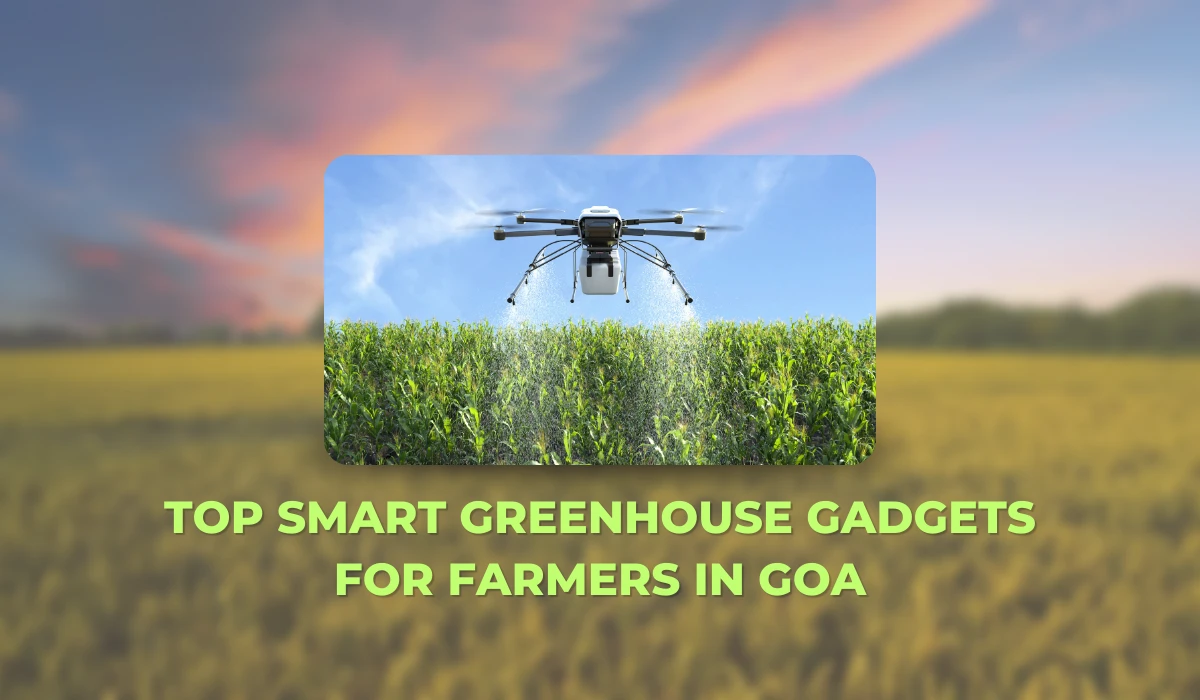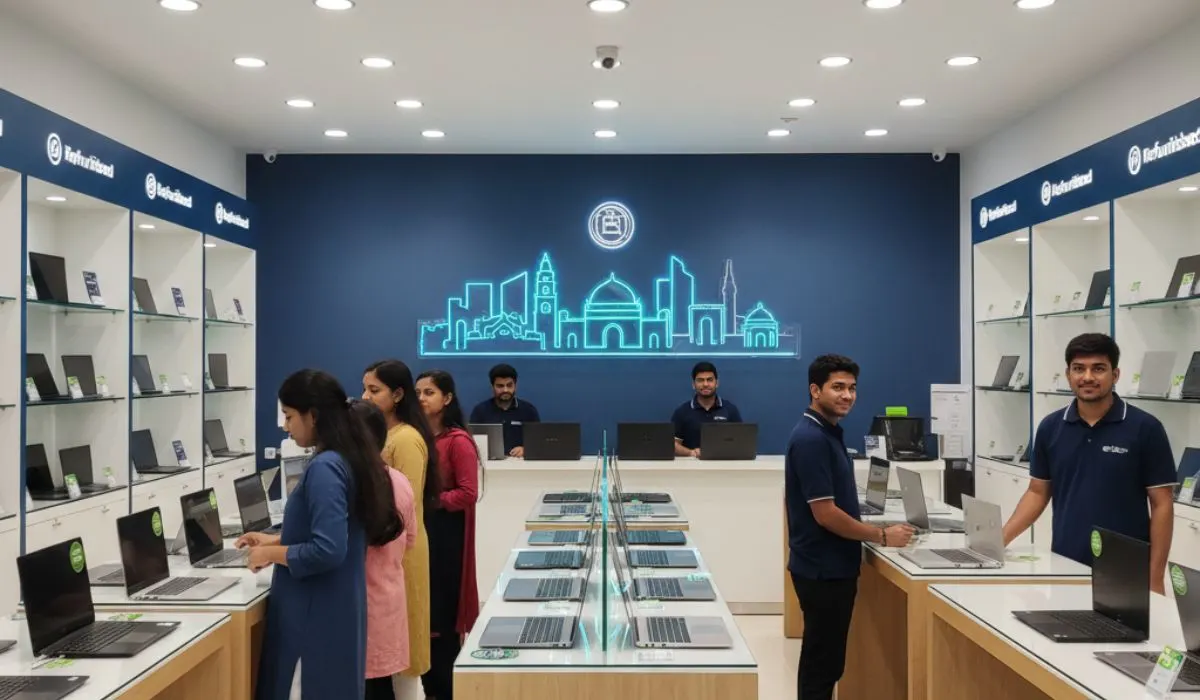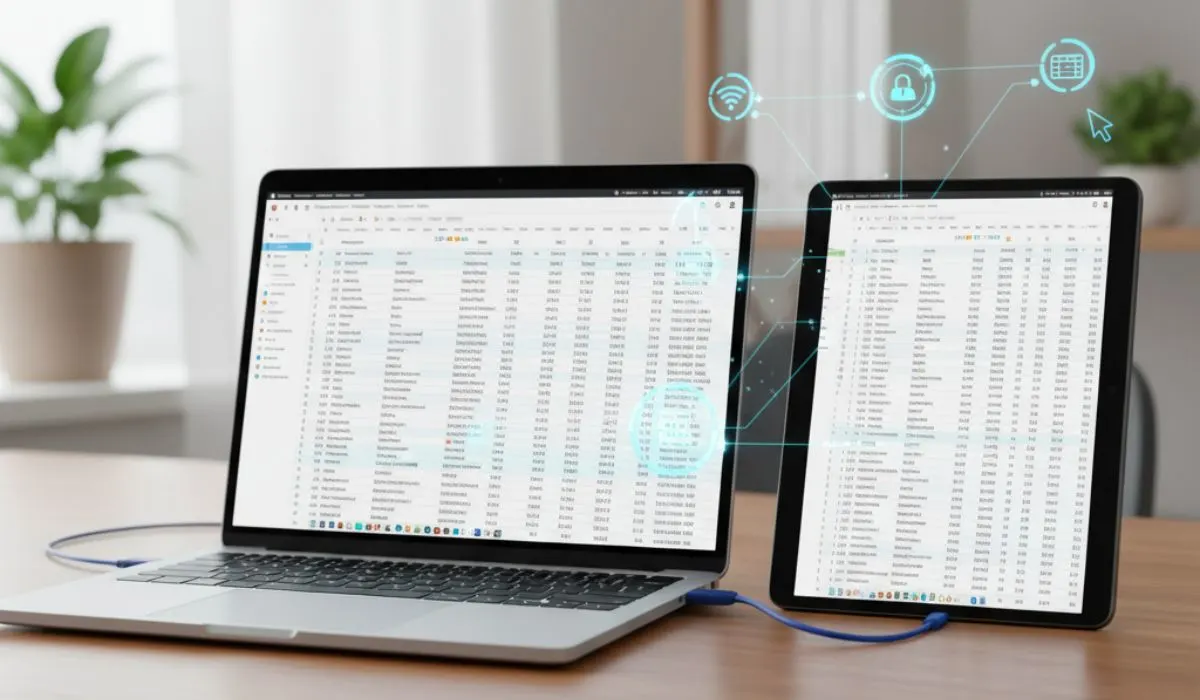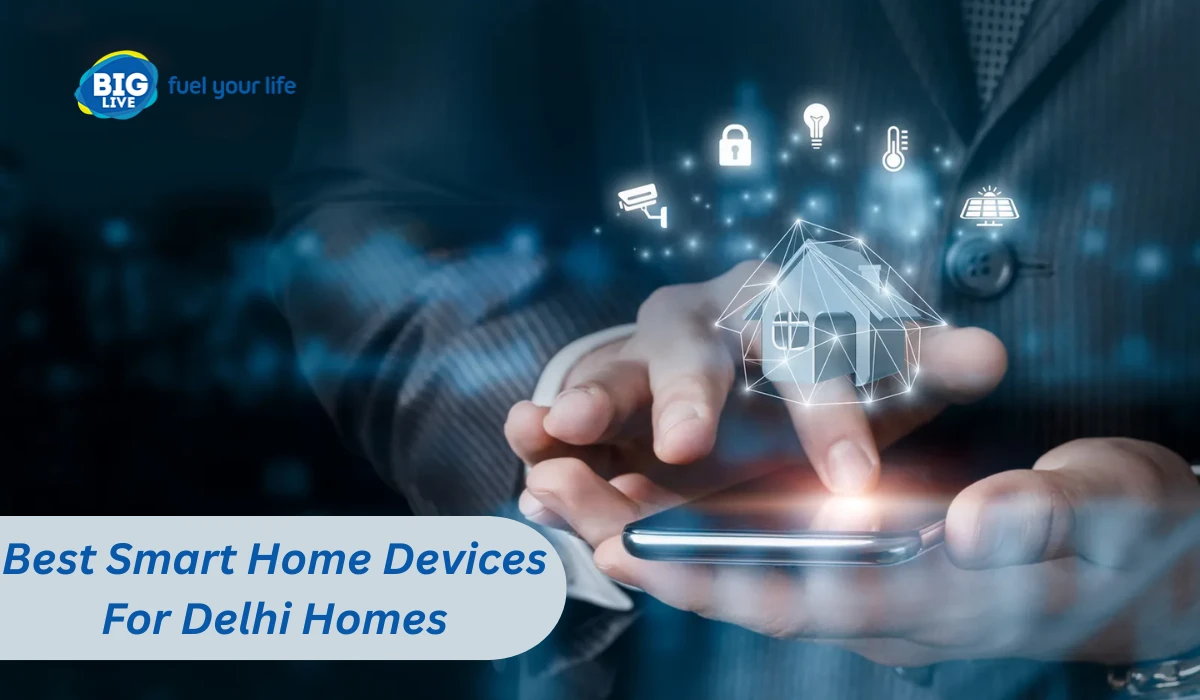Sultry weather, damp, and intense monsoons along the tropical oceanic coastline and city of Goa has both unique opportunities and challenges on greenhouse agriculture. With the demand in increasing value crops like orchids, vegetables, herbs, and aquaponics, and an increasing range of state-funding support available to encourage controlled-environment cultivation, intelligent greenhouse equipment can allow Goan growers to use less water, stabilise production, and reduce workforce requirements and losses to excessive rain and pest attacks. It has listed below the most useful devices of small and middle greenhouse of Goa, the importance of these tools, the mechanisms involved, the sources of it in India and suggested helpful buys and guidelines.
Quick snapshot — why smart gadgets make sense in Goa
- Automation stabilises temperature and humidity during hot spells and monsoon swings, improving crop quality.
- Sensors and IoT let you water precisely (big win where labour or water is constrained) and avoid root diseases in humid climates.
- Many off-the-shelf components (vent openers, soil sensors, controllers, fans, misting systems) are available to buy or integrate in India — so you can build a low-to-medium cost system and scale later.
Read also: The Gadgets That Rule Everyday Life In The State
1) Soil moisture & temperature sensors — the irrigation brains
What they do: Timed volumetric water levels and soil temperature, irrigation is only activated where needed by the crop.
Why essential in Goa: Watering is unnecessary in the wet monsoon and minimize the occurrence of disease.
Examples / models: ECH2O EC-5 (research-grade, low profile) and TEROS-12 are popular, robust options for precision monitoring. The EC-5 is around US$145 as a base reference (buying in India often involves import/shipping or local equivalents).
Buy / install tips: Mount sensors in crop root zone, calibrate for local soils, connect to a controller or LoRa/ESP32 gateway for remote logging. For small growers, a single handheld or Bluetooth sensor can still prevent obvious overwatering.
2) Automatic vent openers (thermal or solar actuated)
What they do: Open/close vents or roof windows automatically based on temperature (wax-based pistons) or via motor/solar actuators.
Why essential in Goa: Rapid ventilation reduces heat build-up and humidity spikes after sun, and reduces fungal outbreaks during humid periods.
Examples / where to buy: Solar and thermal vent openers are sold on Amazon/marketplaces and by greenhouse suppliers; models range from simple wax-piston openers to motorised solar actuators.
Cost & tip: Simple wax-piston openers are inexpensive and maintenance-free; motorised systems give finer control and can integrate with a central controller.
3) IoT greenhouse controllers & monitoring platforms (the central hub)
What they do: Gather sensor reads (temperature, humidity, soil electroconductivity, moisture and light intensity), control actuators (pumps, vents, fans and lights), and display dashboards and alerts to mobile phones and tablets.
Why essential in Goa: The remote-monitored can enable quicker farmer reaction to occurrences of monsoon or power outage; data on monitored farms is stored on cloud-based dashboards that inform agricultural choices.
Indian vendors & solutions: Local integrators and agri-IoT firms provide end-to-end solutions (hardware + cloud) — examples include bespoke IoT integrators and farms using ESP32/Blynk proofs of concept. For enterprise, look at Hortimod/DITSTEK or Sysargus style systems for full automation.
Buy / scale tip: Start with a basic controller (1–2 sensors + relay for pump/fan). Later add LoRaWAN or cellular gateways for multi-house setups.
4) Misting / evaporative cooling & fogging systems
What they do: Reduce greenhouse air temperature using fine mist; used with fans for evaporative cooling.
Why essential in Goa: prevents over-misting at the height of the monsoon; it keeps temperatures down on hot, muggy pre-monsoon days.
Suppliers & price signals: Greenhouse commercial misting systems are available commercially in India; TradeIndia listings show that mid- to large-sized systems cost between 80,000 and 500,000 Rupee, depending on size and construction.
Tip: Pair misting with ventilation and automated scheduling (don’t run misting 24/7 in monsoon).
5) Exhaust & circulation fans (tropical-grade)
What they do: Equip air with ventilation to maintain the humidity and temperature conversations, and hence avoid feetstone air.
Why essential in Goa: Continuous air movement reduces fungal disease risk in humid climate. Choose marine/tropical-rated fans for corrosion resistance.
Buy tip: Ask vendors for greenhouse-specific blowers with IP ratings; pair fans with thermostats/humidistats.
6) Automated drip / fertigation controllers & solenoid valves
What they do: Time and dose irrigation and fertigation waves precisely into drip lines or NFT channels.
Why essential: Accurate fertigation reduces input waste and improves marketable yields for herbs/vegetables. Many controllers integrate with soil moisture readings for closed-loop irrigation.
Practical note: Local pump and piping quality matter — get UV-stabilised drip lines and filters to avoid clogging.
7) On-site weather station / microclimate sensors
What they do: Keep an eye on the temperature, humidity, wind, rain, and sun exposure both inside and outside.
Why essential in coastal Goa: Microclimate data helps in planning of ventilation, misting, and pest patrol concerning weather occurrences. LoRaWAN or simple Wi-Fi weather stations can feed dashboards.
8) LED grow lights & shading systems
What they do: Supplement light or provide shading during intense sun. Automated shade nets are helpful during peak sun; LEDs come into play for high-value off-season production.
Why in Goa: Cloudy monsoons and short winter days for some crops benefit from targeted light management. Pair LED runtime with crop growth stages measured by sensors.
Read also: Indian Brands Making Smart Devices
9) Pest & disease early-warning (camera + analytics)
What they do: Time-lapse cameras or simple CCTV + AI services that flag pest hotspots, foliar disease or water stress.
Why useful: Early detection reduces pesticide use and crop loss in high-humidity contexts where pests/diseases spread fast. For small farms, even mobile photo logs can help.
10) Solar power + battery backup (resiliency)
What they do: Keep pumps, controllers and fans running during grid outages.
Why essential in rural Goa: Solar paired with batteries provides uptime during storms and reduces running costs for pumps and controllers. Many greenhouse projects in Goa add solar to make systems reliable.
Where to buy in India / Goa — realistic sourcing advice
-
Marketplaces: Amazon, eBay and local B2B platforms list vent openers, sensors and small controllers for quick purchase. (vent openers and small accessories commonly available).
-
Indian integrators / OEMs: Look for IoT agri firms and HVAC/vent manufacturers for customised systems — examples include local IoT integrators, Hortimod/DITSTEK, and greenhouse HVAC vendors. Get on-site quotes as installation and climate-proofing matter in Goa.
-
Local contacts: Check the Goa agriculture department / extension (they list success stories, schemes and contacts) before large purchases. State schemes or subsidies (historically promoted) may apply to protected cultivation — always check the current agri portal for updated programmes.
Budgeting — ballpark costs & phasing
-
Starter setup (single small house, basic automation): Simple soil sensor + relay controller + 1 automated valve + 1 vent opener — modest investment (small tens of thousands INR if you source locally and DIY integrate).
-
Commercial ready (medium greenhouse with misting, fans, IoT controller): Expect 80,000 – 5,00,000+ depending on size and misting/cooling needs (TradeIndia listings show large misting systems in this bracket).
-
Enterprise turnkey: Custom climate control, full sensor network, backup power and cloud platform — higher CAPEX but pays off for high-value crops.
Note: Prices vary widely by brand, import duties, shipping and installation. Request local quotes and ask for references of installations in tropical/coastal farms.
Practical checklist for Goan farmers before you buy
- Clarify your crop, area (sq m) and target market (local fresh, export, nurseries).
- Start small: Experiment in a greenhouse that has sensors and automatic sprinklers. Confirm the pay-back of single (or two) types of crops (e.g., leafy products, high-value herbs, orchids).
- Request vendors furnish references of coastal or tropical use, and secure obtaining of components of corrosion-resistance.
- If grid stability is an issue, include solar and storage power.
- Check Goa Agriculture Department subsidies/extension support before investing.
Short case note: urban aquaponics & greenhouses in Goa
There are live projects in Goa using rooftop greenhouses, aquaponics and agrivoltaics that combine solar power with greenhouse cultivation — useful references if you plan integrated systems that include renewable power and water reuse. These projects demonstrate the benefits of combining gadgets (solar, pumps, sensors) rather than buying isolated devices.
Final recommendations — three practical roadmaps
- Low budget / DIY: Wax vent openes + one soil moisture probe + battery-powered timer for drip irrigation. Learn basics and scale.
- Mid budget / scalable: Add IoT controller (ESP32/LoRa gateway), automatic valves, circulation fans and a misting bank. Log data and set automated alerts.
- Commercial / turnkey: Full sensor network, cloud dashboard, HVAC/misting, fertigation and solar backup — contract a specialist integrator and demand coastal-rated hardware.













